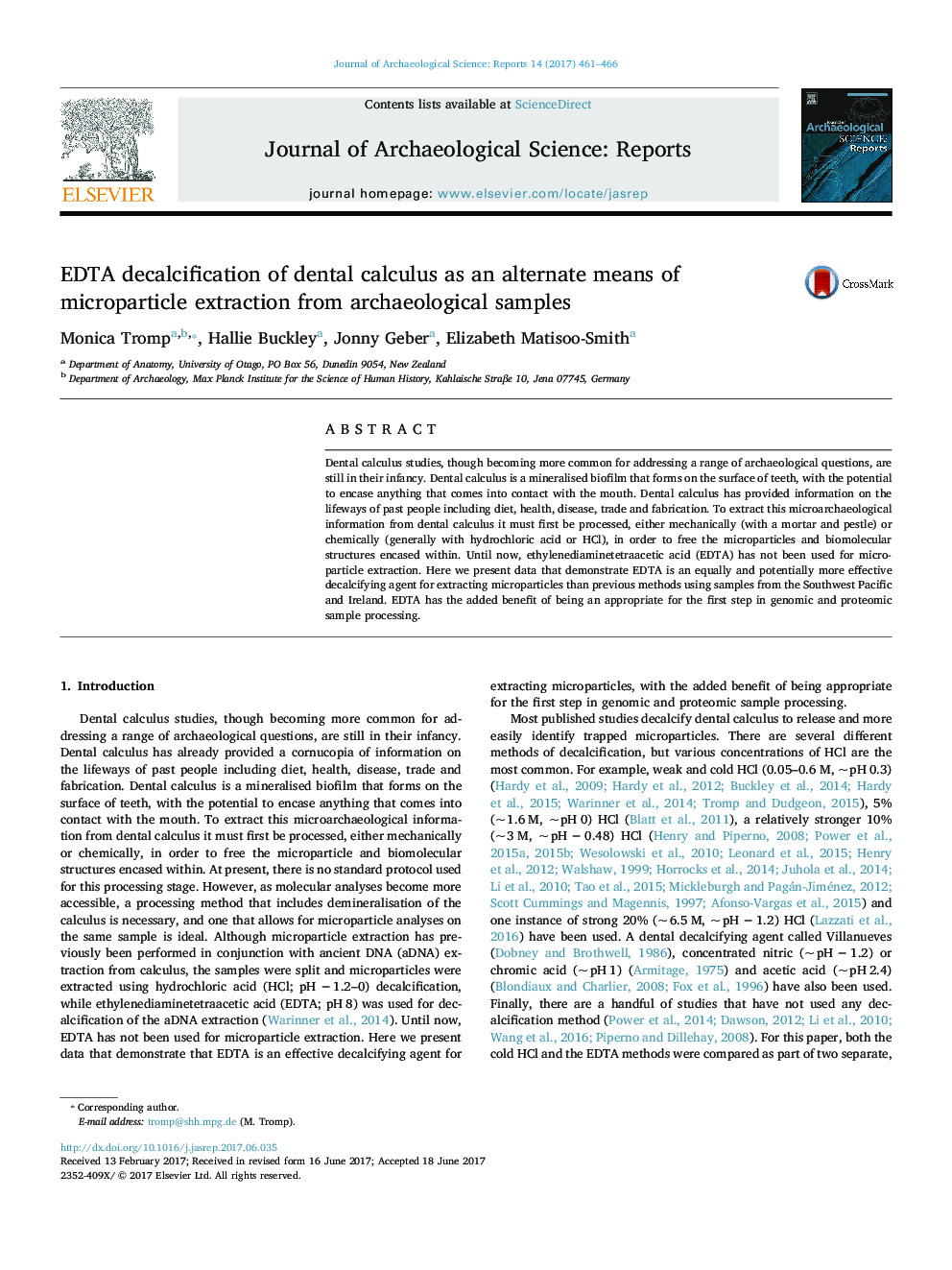| Article ID | Journal | Published Year | Pages | File Type |
|---|---|---|---|---|
| 5112358 | Journal of Archaeological Science: Reports | 2017 | 6 Pages |
Abstract
Dental calculus studies, though becoming more common for addressing a range of archaeological questions, are still in their infancy. Dental calculus is a mineralised biofilm that forms on the surface of teeth, with the potential to encase anything that comes into contact with the mouth. Dental calculus has provided information on the lifeways of past people including diet, health, disease, trade and fabrication. To extract this microarchaeological information from dental calculus it must first be processed, either mechanically (with a mortar and pestle) or chemically (generally with hydrochloric acid or HCl), in order to free the microparticles and biomolecular structures encased within. Until now, ethylenediaminetetraacetic acid (EDTA) has not been used for microparticle extraction. Here we present data that demonstrate EDTA is an equally and potentially more effective decalcifying agent for extracting microparticles than previous methods using samples from the Southwest Pacific and Ireland. EDTA has the added benefit of being an appropriate for the first step in genomic and proteomic sample processing.
Related Topics
Social Sciences and Humanities
Arts and Humanities
History
Authors
Monica Tromp, Hallie Buckley, Jonny Geber, Elizabeth Matisoo-Smith,
